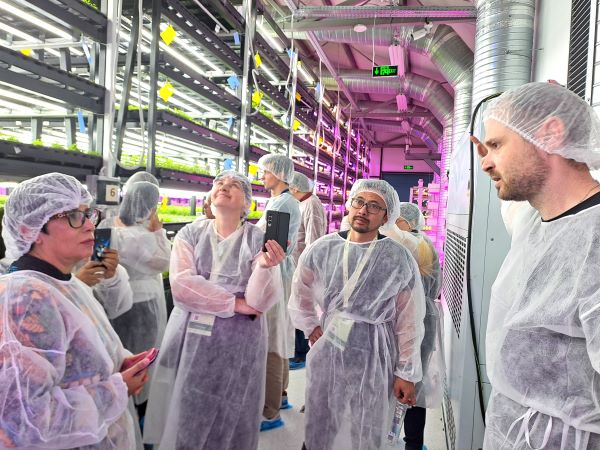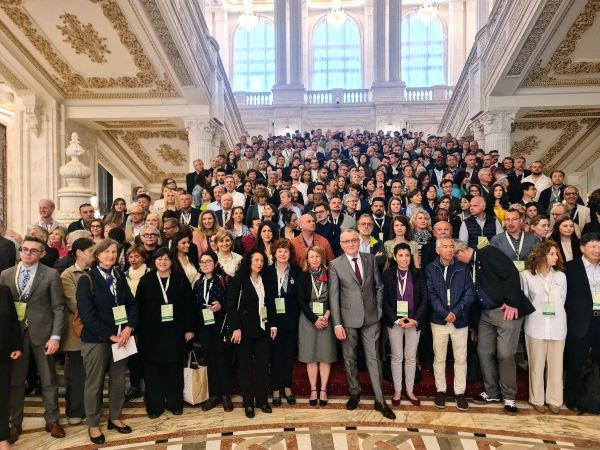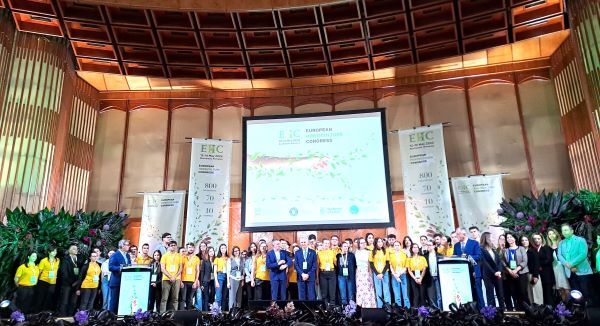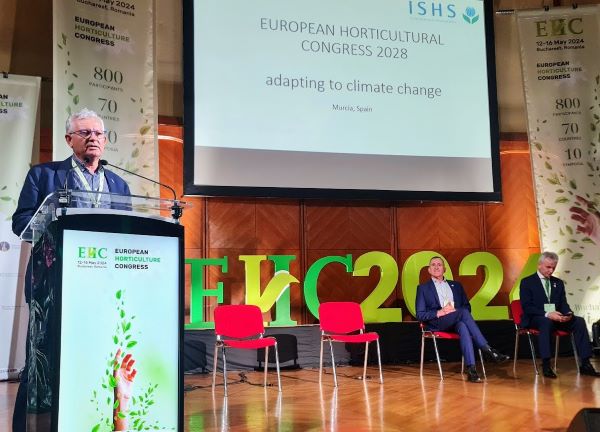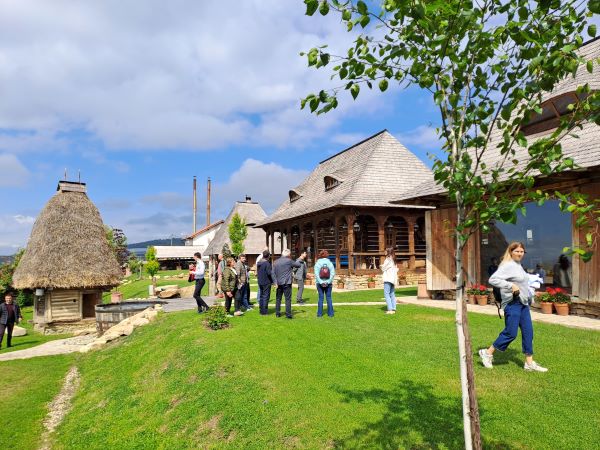Actualidad
Precision in the Handling of Fruits and Vegetables to Maximize Quality
The EHC Postharvest Symposium, part of the European Horticulture Congress, highlights Controlled Atmosphere Storage (DCA) and the understanding of factors affecting organoleptic and nutritional quality - The next edition of the EHC will be held in Murcia, Spain

The continuous advancement in postharvest technologies and those used for research purposes leads to increasingly precise knowledge of the factors affecting fruits and vegetables from their development to the consumer's table. The papers presented in the session dedicated to postharvest at the EHC, European Horticulture Congress, Romania, May 2024, contribute to the understanding of these influencing factors, their effects, and advancements in their control.
The keynote lectures emphasized practical aspects, such as conservation in a dynamic atmosphere using the lowest possible oxygen levels, and quality for the final consumer. One of the sessions was dedicated to strengthening knowledge of the influence of cultivation factors, and another presentation focused on understanding the physiological bases for maintaining quality until it reaches the consumer.
Chlorophyll Fluorescence: Real-time Biodetection for DCA
The Laimburg Research Center is among the most experienced in working with DCA, Dynamic Controlled Atmospheres. One of the main reasons for using DCA is to control apple scald, a condition for which authorized products are no longer available in Europe.
Angelo Zanella delivered one of the keynote presentations, highlighting the advantages of achieving the lowest possible oxygen levels in preservation and the parallel importance of detecting the physiological state of the fruit to prevent damage due to excessively low levels of this gas.
Variability in Maturity States Among Batches from Different Areas of South Tyrol
Chlorophyll fluorescence (DCA-CF) utilizes real-time biodetection, allowing for the dynamic adjustment of atmospheric conditions based on the metabolic responses of stored fruits. This technique is widely implemented in apple preservation, including in South Tyrol, a region producing 10% of the EU's apples. It complements established technologies like 1-MCP treatment and serves as an alternative for organically produced fruit. 1-MCP also helps maintain quality when DCA is interrupted by opening the chambers.
Quality Begins in the Field
The importance of cultivation practices on postharvest behavior and quality has long been evident, and knowledge in recent years has significantly enriched. In addition to the classic understanding of the importance of potassium in fruit quality, numerous other scientific evidences have been added.
This topic was addressed in the keynote lecture by Bhimanagouda Patil, University of Texas, who detailed results obtained by his research group and others. At the same university, Luis Cisneros-Zevallos has demonstrated through various examples that applying stress to plants generally increases the concentration of nutritionally important compounds. Examples mentioned by B. Patil include the following.
In grapefruits, harvesting at the proper maturity increases levels of volatiles such as D-limonene, β-caryophyllene, and nootkatone. Storage conditions affect furanocoumarin levels, which decrease with senescence. Lowering storage temperature reduces these volatiles, possibly due to reduced activities of their biosynthetic enzymes.
Soils with high nitrogen content negatively affect grapefruit quality, reducing volatile and vitamin C content.
Bioactive compounds like furanocoumarin, D-limonene, and vitamin C participate in inhibiting degradative enzymes and improving human metabolism. Degreening enhances nomilin content, which has shown anticancer effects against breast and pancreatic cancer.
Low-dose gamma irradiation enhances health-promoting compounds in grapefruits.
Supplemental lighting increased the firmness of greenhouse-grown tomatoes by limiting the activity of cell wall-degrading enzymes and improving shelf life. These light conditions also enhanced phenolic and carotenoid content, vital for long-term health benefits in humans, particularly for chronic and gut-related syndromes. Light also positively impacted aromatic volatile levels, improving tomato quality and market value.
Objective: Offering Quality
The invited presentation by Julian Veronk from WUR focused on quality, emphasizing postharvest processes. Once harvested, perishable plant products are still alive and continue to mature and/or develop. This team's research demonstrates that abiotic factors like temperature, light spectrum, and relative humidity during cultivation or postharvest storage determine the physiological and biochemical processes shaping the quality of plant products. Improving quality requires studying the signal transduction mechanism from the abiotic signal to the plant response, which is the focus of this research team.
Priority Topics in Postharvest
Postharvest topics were the focus of one of the 10 symposia that comprised the EHC; the presidents of the "International Symposium on Postharvest and Quality of Horticultural Products" were Dirk Köpcke from the Eufrin and Fruit-Growing Centre Jork, Germany, and Liliana Bădulescu from the University of Agronomic Sciences and Veterinary Medicine of Bucharest.
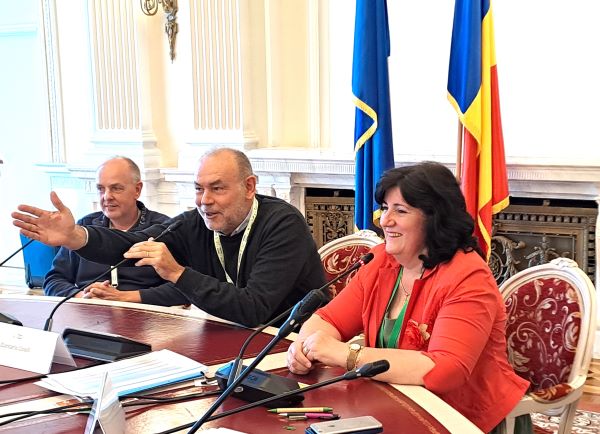
From left to right: Dirk Köpcke, Giancarlo Colelli, and Liliana Bădulescu
Among the papers presented, the priorities were:
- Advanced postharvest technologies for fruits, vegetables, and ornamentals
- Trends in quality of horticultural products (conservation, management, safety)
- Effect of preharvest management on the quality of fruits, vegetables, and ornamentals
- Biochemistry and physiology of postharvest fruits, vegetables, and ornamentals
- Evaluation of quality and conservation of horticultural products (methods, non-destructive assessments, accreditations, policies, challenges)
- Postharvest pathology, disease control, treatments, value addition
- Postharvest management (technical, economic, and administrative aspects)
- Modeling of biological systems, technological processes, and energy demands
- Innovative packaging and new materials
- Effect of horticultural product quality on human health
- Sustainability of postharvest technologies
At the closing of the Postharvest Symposium, Giancarlo Colelli, President of the "Postharvest and Quality Assurance" division of ISHS from the University of Foggia, proposed including a division for artificial intelligence in the topics of interest for future editions.
Additionally, we take this opportunity to thank him for his words, highlighting the work of Poscosecha.com and Postharvest.biz in daily and weekly dissemination through their newsletters, mentioning our presence at scientific events and inviting researchers to use this option to share their work with technicians and producers who can implement their results.



